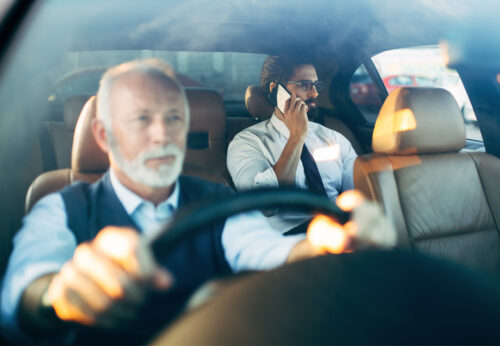
Being injured in a car accident can be devastating to your health, finances, and way of life. If another person’s negligent or reckless conduct caused your injuries, you could potentially recover something called “damages.” It’s estimated that Uber and Lyft drivers in major U.S. cities account for between 2% to 13% of total miles driven. The growing prevalence of ridesharing means that the chance of being involved in an accident with an Uber or Lyft driver is on the rise. Thanks to reasonable pricing and on-demand service, customers continue to flock to ridesharing apps like Uber and Lyft for their transportation needs. The question is, what happens if you’re in an accident with one of these drivers?
How do you recover damages, and who is responsible for covering them?
The answer depends on a few factors, including whether you’re a driver or passenger, and whether the collision happened with an Uber or Lyft driver. In this article, we’ll provide a brief outline of the various scenarios.
The Evolution of Ridesharing Insurance
Given ridesharing’s increased media attention and scrutiny, both Uber and Lyft have had to shift their policies when it comes to covering car accidents. It used to be that your only option would be to recover damages from Uber or Lyft drivers. Unfortunately, the driver’s insurance wouldn’t cover the accident if the driver did not have a commercial policy. This is because most car insurance is for personal use only. As you might imagine, that restrictive policy sparked much controversy, and both ridesharing companies and insurance companies have stepped up to ensure that drivers are covered while on the job.
Major insurance companies like Mercury, State Farm, and Allstate have begun to offer rideshare insurance, and Uber and Lyft have both adopted the practice of carrying liability insurance for their drivers. This coverage takes effect if the driver’s insurance policy denies the claim, or your ridesharing driver doesn’t have enough insurance to cover your damages.
Coverage Limits for Ridesharing Insurance
Uber and Lyft have nearly identical policies when it comes to determining maximum coverage for various accident scenarios. For example, if their driver is at fault while logged into the app, there is insurance coverage up to $100,000. This coverage applies even if the driver has not yet accepted any rides. This is good news if you’re in a collision with an Uber or Lyft driver, and they’re the party at fault. If the driver is either on-route for a pickup, has a passenger in the car, or is completing drop-off, both Uber and Lyft carry liability coverage of up to $1 million per incident.
These scenarios protect the passenger (or a driver) when the company’s ridesharing driver is at fault. However, they don’t necessarily apply if there was a third-party driver that caused the accident.
Damage Recovery if You’re a Passenger
If you’re a passenger and the driver who caused the accident was someone other than your ridesharing driver, the situation changes significantly. Instead of going after your driver’s, or Uber or Lyft’s, insurance, you’ll instead seek compensation for your medical bills and other damages through that party’s insurance company.
A few different things can happen from here, and a car accident attorney will be able to guide you through the various scenarios.
Assuming the other driver has insurance, you can file a claim directly with their insurance company or file a personal injury claim by hiring an attorney.
Suppose the driver does not have insurance or does not have enough coverage to cover your claim. In that case, you can go back to Uber or Lyft to claim damages under the respective company’s uninsured or underinsured coverage. This avenue is also possible if the other driver’s identity is unknown, such as in a hit-and-run accident.
In the event that your damages extend beyond the ridesharing companies’ insurance limits, there’s also the option to file a lawsuit against them. This strategy can be complex because Uber and Lyft argue that their drivers are independent contractors and not employees.
What to Know Before You Ride
Neither Uber nor Lyft offers any coverage if the driver is not logged into the app. Therefore, if you’re a passenger, it’s a good idea to look near your driver’s dashboard to make sure their smartphone is connected, and your route information is showing.
Request a Free Consultation
As you can see, navigating the next steps in the aftermath of an accident involving a ridesharing driver can be complicated. Contact us today to get more information about your options and discover how we can help with your car accident lawsuit.
